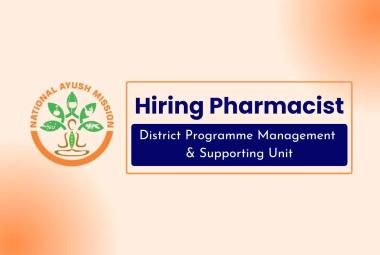 About Authors:
About Authors:
Lohithasu Duppala*1, Madhu priya Damuluri,1 Anilkumar vadda2
1GITAM Institute of Pharmacy, GITAM University, visakhapatnam, Andhra Pradesh, India-530045.
2AVANTHI Institute of pharmaceutical sciences, pharmacology, visakhapatnam, Andhra Pradesh,India-530045.
*lohithasupharma@gmail.com
ABSTRACT:
The environmental biotechnology employs the application of genetic engineering to improve the efficiency and cost which is essential to the future wide spread exploitation of microorganisms to reduce the environmental burden of toxic substances. Now a days it can be achieved by bioremediation, is the process by using microorganism metabolism to remove pollutants and organic substances. It may be employed to attack specific soil contaminants, such as degradation chlorinated hydrocarbons by bacteria.
[adsense:336x280:8701650588]
REFERENCE ID: PHARMATUTOR-ART-1704
INTRODUCTION
It is a technology or biological process for removing (biologically degraded) pollutants or organic wastes from the environment , restoring contaminated sites and preventing future pollution with the help of living microorganisms (hazardous contaminated compounds are transformed by organisms throught enzymatic reaction take place as a part of their metabolic process) under controlled conditions to an innocuous state, or to levels below concentration limits established by regulatory authorities. Use of living organisms to transform, destroy or immobilize contaminants.1,2
Factors influence the process6,7
1. The existence of a microbial population capable of degrading the pollutants
2. The availability of contaminants to the microbial population
3. The environmental factors–type of soil, temperature, PH, the presence of oxygen or other electron acceptors ,and nutrients.
4. It requires the control and manipulation of microbial processes in surface reactors or in the subsurface.
5. The contaminants can be biodegraded in situ or removed and placed in bioreactor (at or off the contamination sites).
Table 1.types of Bioremedation
|
1.In situ Bioremediation
|
2 . Ex situ Bioremediation
|
|
a) Bioventing b) In situ biodegradation c) Biostimulation d) Biosparging e) Bioaugmentation f) Natural Attenuation |
a) Land farming b) Composting c) Biopiles d) Bioreactors
|
|
Phytoremediation 8-15 |
|
|
a) Phytoextraction or phytoaccumulation b) Phytodegradation or phytotransformation c) Phytostabilization d) Rhizodegradation ,Rhizofiltration |
|
Strategies of Bioremediation 16-19
The two main types of bioremediation are in situ bioremediation and ex situ bioremediation. In addition, another offshoot of bioremediation is phytoremediation.
In situ bioremediation involves treating the contaminated material at the site and it is the most desirable options due to lower cost ,less disturbance since they provide the treatment at a site avoiding excavation and transport of contaminants, while ex situ involves the removal of the contaminated material to be treated elsewhere and it also requires transport of the contaminated water or excavation of the contaminated soil prior to remediation treatments.
In Situ Bioremediation
Five Steps of In Situ Bioremediation
1. Site investigation
2. Treatability studies
3. Recovery of free product and removal of the
4. contamination source
5. Design and implementation of the in situ
6. bioremediation system
7. Monitoring and performance evaluation of the in situ bioremediation system
In situ bioremediation is when the contaminated site is cleaned up exactly where it occurred. It is the most commonly used type of bioremediation because it is the cheapest and most efficient, so it’s generally better to use.
[adsense:468x15:2204050025]
Bioventing
Bioventing is the most common in situ treatment and involves supplying air and nutrients through wells to contaminated soil to stimulate the indigenous bacteria.This uses microorganismsto biodegrade organic constituents adsorbed on soils in the unsaturated zone (extend from the top of the ground surface to the water table) One of the most common approaches in soil, ,supply air or oxygen and nutrients via wells into theunsaturated zone, takes advantage of enhancing the activity of indigenous microorganisms.
In situ biodegradation
In situ biodegradation involves supplying oxygen and nutrients by circulating aqueous solutions through contaminated soils to stimulate naturally occurring bacteria to degrade organic contaminants.Supply air and nutrients by circulating aqueous solutions through contaminated soils or groundwater
Biosparging
Biosparging involves the injection of air under pressure below the water table to increase groundwater oxygen concentrations and enhance the rate of biological degradation of contaminants by naturally occurring bacteria. Biosparging increases the mixing in the saturated zone and thereby increases the contact between soil and groundwater. Injection of air or oxygen below the water table into saturated zone,increases groundwater oxygen concentrations and mixing in saturated zone , takes advantage of enhancing the activity of indigenous microorganisms.
Bioaugmentation
This process where selected standardized bacteria (microbes) are added to an area that has been contaminated with an unwanted substance. These bacteria cause breakdown of contaminates. Bioremediation frequently involves the addition of microorganisms indigenous or exogenous to the contaminated sites. Addition of indigenous or exogenous microorganismsand limits to use: competition and necessity
Biostimulation
It involves the modification of the environment to stimulate the existing bacteria capable of bioremediation. This can be done by the addition of various forms of rate limiting nutrients and electron acceptors , such as phosphrous, nitrogen , oxygen, or carbon etc.,
NOW YOU CAN ALSO PUBLISH YOUR ARTICLE ONLINE.
SUBMIT YOUR ARTICLE/PROJECT AT articles@pharmatutor.org
Subscribe to Pharmatutor Alerts by Email
FIND OUT MORE ARTICLES AT OUR DATABASE
There are two main types of in situ bioremediation: intrinsic bioremediation and accelerated bioremediation.
Intrinsic Bioremediation
It uses microorganisms already present in the environment to biodegrade harmful contaminant. There is no human intervention involved in this type of bioremediation, and since it is the cheapest means of bioremediation available, it is the most commonly used. When intrinsic bioremediation isn’t feasible, scientists turn next to accelerated bioremediation.
Accelerated Bioremediation
In accelerated bioremediation, either substrate or nutrients are added to the environment to help break down the toxic spill by making the microorganisms grow more rapidly. Usually the microorganisms are indigenous, but occasionally microorganisms that are very efficient at degrading a certain contaminant are additionally added. Main advantage is that site disturbance is minimized, which is particularly important when the contaminated plume has moved under permanent structures. Biggest limitation of in situ treatment has been the inability to deal effectively with metal contaminants mixed with organic compounds.The goal of in situ treatment is to manage and manipulate the subsurface environment to optimize microbial degradation.
Ex Situ Bioremediation
Ex Situ Bioremediation, in which is when contaminated land are taken out of the area to be cleaned up by the organisms. This type of bioremediation is generally used only when the site is threatened for some reason, usually by the spill that needs to be cleaned up. Ex situ bioremediation is only used when necessary because it’s expensive and damaging to the area, since the contaminated land is physically removed.
Land farming
Landfarming is a simple technique in which contaminated soil is excavated and spread over a prepared bed and periodically tilled until pollutants are degraded. Contaminated soil is excavated and spread over land. Soil is periodically tilled to improve aeration.Remediation due to indigenous microorganisms, as well as chemical and physical processes.Generally limited to the superficial 10–35 cm of soil.It can reduce monitoring and maintenance costs
Composting
Composting is a technique that involves combining contaminated soil with non-hazardous organic compounds such as manure or agricultural wastes. The presence of these organic materials supports the development of a rich microbial population and elevated temperature characteristic of composting. Combines contaminated soil with nonhazardous organic amendants (e.g. manure or agricultural wastes).This process involves in controlled decomposition of organic matters.
Biopiles
It is combination of landfarming and composting .It control physical losses of contaminants
Bioreactors
These , such as slurry reactors or aqueous reactors . These involving the processing of contaminated solid material or water through engineered containment system. A slurry bioreactor is a containment vessel and apparatus used to create a 3 phases –solid, liquid and gas, mixing condition to increase bioremediation rate of soil bound and water soluble pollutants as a water slurry of contaminated soil and biomass capable of degrading target contaminants. Soil and water pumped up from a contaminated plume and processed through an engineered containment system.Degradation in a bioreactor is generally greater than in situ because the contained environment is more controllable and predictable
Phytoremediation
Phytoremediation is the use of plants to clean up potentially damaging spills. The plants work with soil organisms to transform contaminants, such as heavy metals and toxic organic compounds, into harmless or valuable forms.
Classified based on the contaminant fate: Phytoextraction, Phytotransformation, Phytostabilization, Phytodegradation, Rhizofiltration
Phytoextraction or phytoaccumulation
Plants used to accumulate contaminants in the roots and aboveground shoots or leaves or biomass.It can be a relatively low cost option for a large area.Results in biomass that must be properly disposed of or reused .Currently , this process is mainly used for extracting heavy metals and phytomining.Natural Phyto-accumulation, where plants naturally take up the contaminants in soil unassisted, and Induced or assisted Phyto -accumulation, in which a conditioning fluid containing a chelator or another agent is added to soil to increase metal solubility or mobilization so that the plants can absorb them more easily.
Advantages.
phytoextraction can clean up the soil without causing any kind of harm to soil fertility. It is cheaper than any other clean-up process.
Disadvantage
It takes more time than anthropogenic soil clean-up methods.
Phytotransformation
Uptake of organic contaminants from soil, sediments ,or water and transformation to more stable, less toxic, or less mobile forms
Eg. metal chromium can be reduced from hexa valent to less mobile (and non-carcinogenic) trivalent chromium
Phytostabilization
In which mobility and migration of contaminants are reduced through sorption onto or into the plant .Leachable constituents are absorbed and bound into the plant structure so that they form a stable mass of plant from which contaminants will not reenter the environment.
Eg:A vegetative cap to stabilize and contain mine tailings.
Phytodegradation
It is the breakdown of contaminants due to the presence of proteins and enzymes produced by the plants.
Rhizodegradation
It is the breakdown of contaminants through activity of the rhizosphere
Rhizofiltration
It is water remediation technique .It is used to reduce contamination in natural wetlands and estuary areas.
Monitoring bioremediation
Bioremediation process can be monitored indirectly by measuring the Oxidation Reduction Potential or redox in soil and groundwater, together with pH, temperature, oxygen content, electron acceptor/donor concentrations, and concentration of breakdown products (e.g. carbon dioxide). This, by itself and at a single site, gives little information about the process of remediation. It is necessary to sample enough points on and around the contaminated site to be able to determine contours of equal redox potential. Contouring is usually done using specialised software, e.g. using Kriging interpolation. If all the measurements of redox potential show that electron acceptors have been used up, it is in effect an indicator for total microbial activity. Chemical analysis is also required to determine when the levels of contaminants and their breakdown products have been reduced to below regulatory limits.
Table 2 .The decresing biological break down rate as function of the redox potential
|
s.no |
Process |
Reaction |
Redox potential (Eh in Mv) |
|
A |
Aerobic |
O2 + 4e− + 4H+ → 2H2O |
600 ~ 400 |
|
B |
Anaerobic |
|
|
|
1 |
denitrification |
2NO3− + 10e− + 12H+ → N2 + 6H2O |
500 ~ 200 |
|
2 |
manganese IV reduction |
MnO2 + 2e− + 4H+ → Mn2+ + 2H2O |
400 ~ 200 |
|
3 |
iron III reduction |
Fe(OH)3 + e− + 3H+ → Fe2+ + 3H2O |
300 ~ 100 |
|
4 |
sulphate reduction |
SO42− + 8e− +10 H+ → H2S + 4H2O |
0 ~ −150 |
|
5 |
fermentation |
2CH2O → CO2 + CH4 |
−150 ~ −220 |
This table shows the (decreasing) biological breakdown rate as function of the redox potential.
Eg;
1.Thomas Experiement
Table 3 summary of Thomas Experiement

2. Degradation /breakdown of Toxic aromatic pollutants, petroleum, pesticides, chlorinated compounds(Chlorinated hydrocarbons, also known as organochlorides including pesticides and other organic compounds such as PCB -polychlorinated biphenyls)) into Non toxic/less toxic/harmless compounds in the presence fungi ,microorganisms.
3. Benzene and related fuel components (BTEX),Pyrene and other polynuclear aromatics, Chlorinated aromatics and solvents, Herbicides and pesticides, Nitroaromatic explosives and plasticizers compounds into Non toxic/less toxic/harmless compounds.. Microorganisms used to perform the function of bioremediation are known as bioremediators.
4. Heavy metal, Pb, Hg, Cd, Ni and Be can accumulate in various organs, interfere with normal enzymatic reactions and cause disease including cancer
Advantages of bioremediation
- Bioremediation is a natural process and is therefore perceived by the public
- Bioremediation is useful for the complete destruction of a wide variety of contaminants.
- Number of cost/efficiency advantages
- Instead of transferring contaminants from one environmental medium to another, for example, from land to water or air, the complete destruction of target pollutants is possible.
- The bacterium Deinococcus radiodurans (the most radioresistant organism known) has been modified to consume and digest toluene and ionic mercury from highly radioactive nuclear waste.
- Bioremediation can often be carried out on site, often without causing a major disruption of normal activities.
- Bioremediation can prove less expensive than other technologies that are used for cleanup of hazardous waste
- The cost of the phytoremediation is lower than that of traditional processes both in situ and ex situ
- The plants can be easily monitored
- The possibility of the recovery and re-use of valuable metals (by companies specializing in “phyto mining”)
- It is potentially the least harmful method because it uses naturally occurring organisms and preserves the environment in a more natural state.
Disadvantages of bioremediation
- Bioremediation is limited to those compounds that are biodegradable. Not all compounds are susceptible to rapid and complete degradation.
- There are some concerns that the products of biodegradation may be more persistent or toxic than the parent compound.
- Biological processes are often highly specific. microbial populations, suitable environmental growth conditions, and appropriate levels of nutrients and contaminants.
- It is difficult to extrapolate (deduce) from bench and pilot-scale studies to fullscale field operations.
- Bioremediation often takes longer than other treatment options.
REFERENCES
1. Diaz E (editor). (2008). Microbial Biodegradation: Genomics and Molecular Biology (1st ed.). Caister Academic Press. ISBN 1-904455-174. horizonpress.com/biod.
2. Brim H, McFarlan SC, Fredrickson JK, Minton KW, Zhai M, Wackett LP, Daly MJ (2000). "Engineering Deinococcus radiodurans for metal remediation in radioactive mixed waste environments". Nature Biotechnology 18 (1): 85–90.
3. Mendez MO, Maier RM (2008), "Phytostabilization of Mine Tailings in Arid and Semiarid Environments—An Emerging Remediation Technology", Environ Health Perspect 116 (3): 278–83
4. Vroblesky, D.; Nietch, C.; Morris, J. (1998), "Chlorinated Ethenes from Groundwater in Tree Trunks", Environmental Science & Technology 33 (3): 510–515.
5. Shilpi Sharma:Review :Bioremediation: Features, Strategies and applications, Asian Journal of Pharmacy and Life Science, ISSN 2231 – 4423, Vol. 2 (2), April-June,2012.
6. Vidali M., 2001. Bioremediation: An overview. Pure Applied Chemistry, 73:1163-1172
7. Keshav Prasad Shukla, Nand Kumar Singh, Shivesh Sharma, Bioremediation: Developments, Current Practices and Perspectives, Genetic Engineering and Biotechnology Journal, Volume 2010
8. Macek T, Mackova M, Kas J, 2000. Exploitation of plants for the removal of organics in environmental remediation. Biotechnology Advances, 18: 23-34.
9. Zhuang P, Yang QW, Wang HB, Shu WS, 2007. Phytoextraction of heavy metals by eight plant species in the field.Water, Air and Soil Pollution, 184: 235-242.
10. Murali Subramanian, David J. Oliver, and Jacqueline V. Shanks, 2006. TNT Phytotransformation Pathway Characteristics in Arabidopsis: Role of Aromatic Hydroxylamines. Biotechnology Programme, 22: 208 -216.
11. Garrison AW, Nzengung VA, Avants JK, Ellington JJ, Jones EW, Rennels D, Wolfet NL, 2000. Phytodegradation of p,p’ - DDT and the enantiomers of o, p’ – DDT. Environmental Science and Technology, 34: 1663-1670
12. Newman LA. Reynolds CM, 2004. Phytodegradation of organic compounds. Current Opinion in Biotechnology, 15:225-230.
13. Dushenkov V, Nanda Kumar PBA, Motto H, Raskin I, 1995. Rhizofiltration: the use of plants to remove heavy metalsfrom aqueous streams. Environmental Science and Technology, 29: 1239- 1245.
14. Verma P, George K, Singh H, Singh S, Juwarkar A, Singh R, 2006. Modeling rhizofiltration: heavy metal uptake byplant roots. Environmental Modeling and Assessment, 11: 387-394.
15. Vazquez S, Agha A, Granado A, Sarro M, Esteban E, Penalosa J, Carpena R, 2006. Use of white Lupin plant for phytostabilization of Cd and As polluted acid soil. Water, Air and Soil Pollution, 177: 349-365.
16. Gui-Lan Niu, Jun-Jie Zhang, Shuo Zhao, Hong Liu, Nico Boon, Ning-Yi Zhou,2009Bioaugmentation of a 4- chloronitrobenzene contaminated soil with Pseudomonas putida ZWL73. Environmental Pollution 57:763-771.
17. Blanca Antizar-Ladislao, Angus J Beck, Katarina Spanova, Joe Lopez-Real, Nicholas J Russell, 2007.The influence ofdifferent temperature programmes on the bioremediation of polycyclic aromatic hydrocarbons (PAHs) in a coal-tar contaminated soil by in-vessel composting. Journal of Hazardous Materials, 14:340-347.
18. Blanca Antizar-Ladislao, Katerina Spanova, Angus J. Beck, Nicholas J. Russell, 2008. Microbial community structure changes during bioremediation of PAHs in an aged coal-tar contaminated soil by in-vessel composting, International Biodeterioration & Biodegradation, 61: 357-364.
19. Bouwer EJ and Zehnder AJB, 1993. Bioremediation of organic compounds putting microbial metabolism to work. Trends in Biotechnology, 11: 287-318.
NOW YOU CAN ALSO PUBLISH YOUR ARTICLE ONLINE.
SUBMIT YOUR ARTICLE/PROJECT AT articles@pharmatutor.org
Subscribe to Pharmatutor Alerts by Email
FIND OUT MORE ARTICLES AT OUR DATABASE









